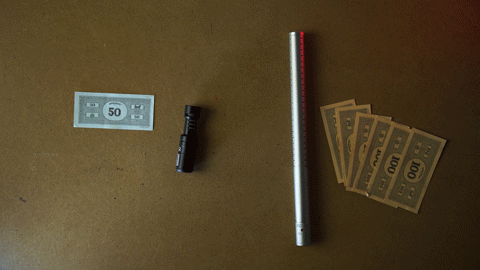The Rode NTG3 vs the Rode VideoMicro. One is $600. One is $60. One is 10x the price than the other - but is it 10x better?
Today we are going to find out! Welcome to The Film Look.
We are giving each microphone a like-for-like comparison in some quintessential sound recording situations.
First up, our presenting setup.
When we present an episode, we boom a microphone overhead and plug it straight into the camera. We use the NTG3, and we have an SmartRig XLR phantom power adapter to convert it and plug it straight into the camera.
The VideoMicro on the other hand, uses a 3.5mm jack, so it doesn’t need an adapter, just an extension cable.
When you compare the sound of these microphones side by side, it is clear the NTG3 sounds more full and clear whereas the VideoMicro sounds a little tinny. But considering the VideoMicro is only a tenth of the price, it’s holding up really well.
To give the VideoMicro a fighting chance, I’m going to tweak the EQ and attempt to match it to the NTG3. Let me play those clips again.
This is sounding much better. In all honesty, now the VideoMicro sounds just as good as the NTG3 in this setup.
But what about if we are shooting a wide shot?
Booming the microphone in the same position as earlier will place the microphone in frame, so we must move the microphone further back. Let’s see how both mics handle booming from a distance.
Positioning the microphone from a long distance is the worst way to record sound; you get a lot of noise, low levels of dialogue, and it picks up a lot of acoustic tone in the room. From my ears, both microphones sound very similar. And similar being, both pretty rubbish.
So what about setting up a plant mic?
Because the VideoMicro is so small, it can easily be hidden in the shot, such as in a car, taped to the sun visor.
You just need to get creative and find a place to hide it close to your subject.
The NTG3, on the other hand, has a harder job of being so sneaky.
We have a video about different ways to record dialogue in a wide shot if you want to see some more methods.
Next up, we have foley.
We will record some clothing foley in a quiet room with the microphone really close. The environment needs to be silent and the microphone needs to pick up the nuances in the sound.
I’ll be recording in sync with our film Backstage, recording clothing foley for the Medium.
The NTG3 is an obvious winner. The higher sensitivity means it can record subtle noises a lot louder than the VideoMicro. So when the volume is balanced between both mics, the VideoMicro introduces a lot more noise into the sound.
So to conclude: The NTG3 is obviously a better microphone, that comes with the obvious higher price tag. It is more sensitive, so it records a cleaner and more well-rounded sound. It's perfect for recording high quality sound on short films.
But the VideoMicro also has its place. We use it when recording behind the scenes because it's so easy to set up on top of the camera.
It also wins in the “not breaking the bank” category, so if you are looking for a budget option, you CAN still record good sound for a short film with this microphone.
This video was Sponsored By
🎵 http://bit.ly/pbtfl-spinningcircles - Click here to download this episode's track. Check out Premiumbeat.com to discover a huge range of exclusive royalty free music!
DISCLAIMERS:
Some of these links are affiliate links, if you purchase gear via these links The Film Look will receive a small commission, but there will be no additional cost to you. Thank you!












